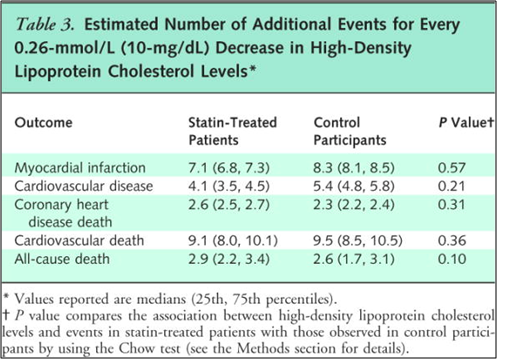Current national guidelines for CVD risk reduction are primarily focused on strategies to reduce levels of low-density lipoprotein cholesterol (LDL-C), with the most recent focus being on “lower is better” rather than an effort to increase high-density lipoprotein cholesterol (HDL-C). A careful examination of randomized, controlled trials (RCTs) using statins demonstrates that even with intensive statin therapy and intensive LDL-C lowering, many cardiovascular events are not prevented.

As the table shows, even after adjustment for on-treatment LDL-C levels, age, hypertension, diabetes mellitus, and tobacco use, statin-treated patients are subject to the same risk associated with lower levels of HDL-C, relative to similar patients not treated with statins. The persistent cardiovascular risk in statin-treated patients may be partly explained by low levels of HDL-C or other CVD risk factors that are associated with low levels of HDL-C.
(From: Meta-analysis: Statin Therapy Does Not Alter the Association Between Low Levels of High-Density Lipoprotein Cholesterol and Increased Cardiovascular Risk, Haseeb Jafri, MD et al. Ann Intern Med. 2010;153:800-808)


Comments 1
Pingback: Statins may improve your cholesterol but not your cardiac risks - Cardiac Health